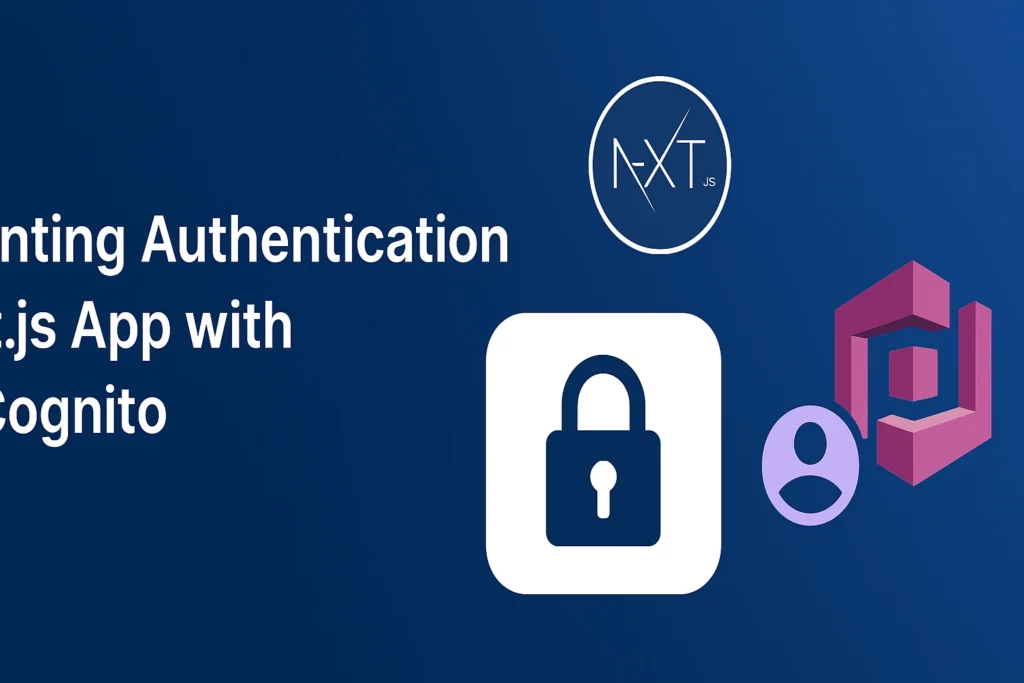🚀 Implementing Authentication in a Next.js App with AWS Cognito
If you’re building a serverless or JAMstack app using Next.js, integrating AWS Cognito for authentication is a powerful and scalable solution. In this guide, we’ll walk you through setting up authentication using AWS Cognito User Pools and managing sessions within your Next.js frontend.
🔗 Table of Contents
- Why AWS Cognito for Authentication?
- Set Up AWS Cognito User Pool
- Integrate AWS Cognito in Next.js App
- Implement Signup, Login & Logout
- Handle Tokens & Sessions
- Protect Routes in Next.js
- Conclusion
✅ Why AWS Cognito for Authentication?
AWS Cognito offers:
- Secure user sign-up and sign-in
- Built-in multi-factor authentication
- Easy integration with AWS Lambda and API Gateway
- Supports OAuth, SAML, and custom authentication flows
📘 Also Read: AWS Cognito Docs
🔧 Set Up AWS Cognito User Pool
- Go to AWS Cognito Console
- Create a User Pool
- Choose
EmailorPhone numberas username - Enable MFA if needed
- Set up App client (no client secret for browser-based apps)
- Choose
- Copy your:
- User Pool ID
- App Client ID
- AWS Region
💻 Integrate AWS Cognito in Next.js App
Install AWS Amplify (or Amazon Cognito SDK):
npm install aws-amplify
Initialize AWS Amplify:
// aws-config.js
import { Amplify } from 'aws-amplify';
Amplify.configure({
Auth: {
region: 'us-east-1',
userPoolId: 'us-east-1_XXXXXXX',
userPoolWebClientId: 'XXXXXXXXXXXXXX',
},
});
Use it in your app:
// _app.js
import '../styles/globals.css';
import '../aws-config';
function MyApp({ Component, pageProps }) {
return <Component {...pageProps} />
}
🔐 Implement Signup, Login & Logout
Signup:
import { Auth } from 'aws-amplify';
const signUp = async () => {
try {
await Auth.signUp({
username: 'test@example.com',
password: 'Password123!',
attributes: { email: 'test@example.com' }
});
} catch (error) {
console.log('Signup Error:', error);
}
};
Login:
const signIn = async () => {
try {
const user = await Auth.signIn('test@example.com', 'Password123!');
console.log('Signed in user:', user);
} catch (error) {
console.log('Sign-in Error:', error);
}
};
Logout:
const signOut = async () => {
await Auth.signOut();
};
🔐 Handle Tokens & Sessions
To get current user session:
const session = await Auth.currentSession();
const idToken = session.getIdToken().getJwtToken();
Use this token in API calls (e.g., Axios headers).
🔒 Protect Routes in Next.js
You can create a HOC (higher-order component) or use middleware to protect pages:
import { useEffect } from 'react';
import { useRouter } from 'next/router';
import { Auth } from 'aws-amplify';
const withAuth = (WrappedComponent) => {
return (props) => {
const router = useRouter();
useEffect(() => {
Auth.currentAuthenticatedUser()
.catch(() => {
router.push('/login');
});
}, []);
return <WrappedComponent {...props} />;
};
};
export default withAuth;
Use this to wrap protected pages:
export default withAuth(MySecurePage);
🧩 Conclusion
By using AWS Cognito with Next.js, you get scalable, secure, and easy-to-manage user authentication. With Amplify, you can abstract much of the heavy lifting and focus on building your app’s experience.
📚 Related Posts
- Deploying Next.js App to AWS
- Serverless Authentication using JWT
- Next.js Middleware: What You Need to Know
Let me know if you’d like this as an HTML/WordPress blog post or Markdown version too!









